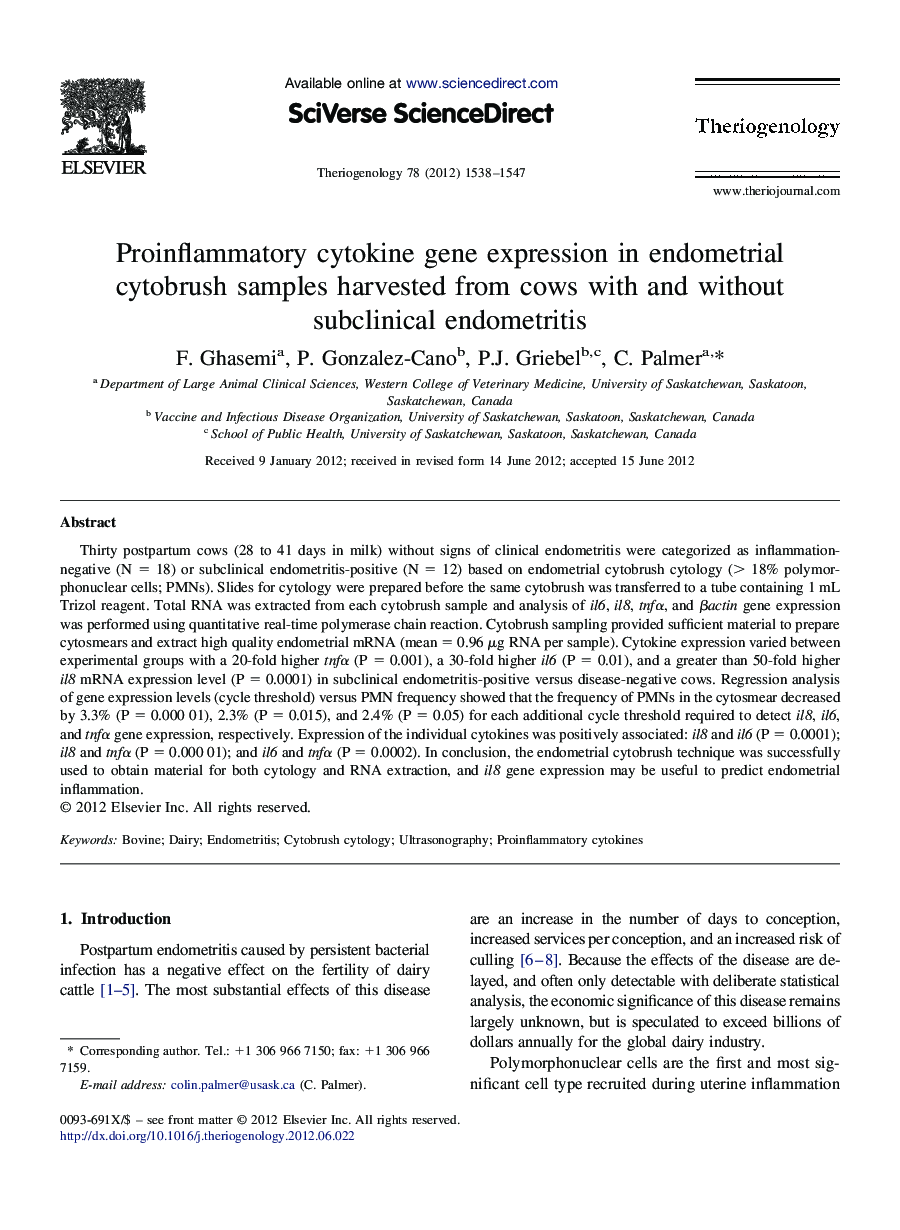| Article ID | Journal | Published Year | Pages | File Type |
|---|---|---|---|---|
| 10892641 | Theriogenology | 2012 | 10 Pages |
Abstract
Thirty postpartum cows (28 to 41 days in milk) without signs of clinical endometritis were categorized as inflammation-negative (N = 18) or subclinical endometritis-positive (N = 12) based on endometrial cytobrush cytology (> 18% polymorphonuclear cells; PMNs). Slides for cytology were prepared before the same cytobrush was transferred to a tube containing 1 mL Trizol reagent. Total RNA was extracted from each cytobrush sample and analysis of il6, il8, tnfα, and βactin gene expression was performed using quantitative real-time polymerase chain reaction. Cytobrush sampling provided sufficient material to prepare cytosmears and extract high quality endometrial mRNA (mean = 0.96 μg RNA per sample). Cytokine expression varied between experimental groups with a 20-fold higher tnfα (P = 0.001), a 30-fold higher il6 (P = 0.01), and a greater than 50-fold higher il8 mRNA expression level (P = 0.0001) in subclinical endometritis-positive versus disease-negative cows. Regression analysis of gene expression levels (cycle threshold) versus PMN frequency showed that the frequency of PMNs in the cytosmear decreased by 3.3% (P = 0.000 01), 2.3% (P = 0.015), and 2.4% (P = 0.05) for each additional cycle threshold required to detect il8, il6, and tnfα gene expression, respectively. Expression of the individual cytokines was positively associated: il8 and il6 (P = 0.0001); il8 and tnfα (P = 0.000 01); and il6 and tnfα (P = 0.0002). In conclusion, the endometrial cytobrush technique was successfully used to obtain material for both cytology and RNA extraction, and il8 gene expression may be useful to predict endometrial inflammation.
Related Topics
Life Sciences
Agricultural and Biological Sciences
Animal Science and Zoology
Authors
F. Ghasemi, P. Gonzalez-Cano, P.J. Griebel, C. Palmer,
